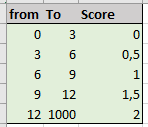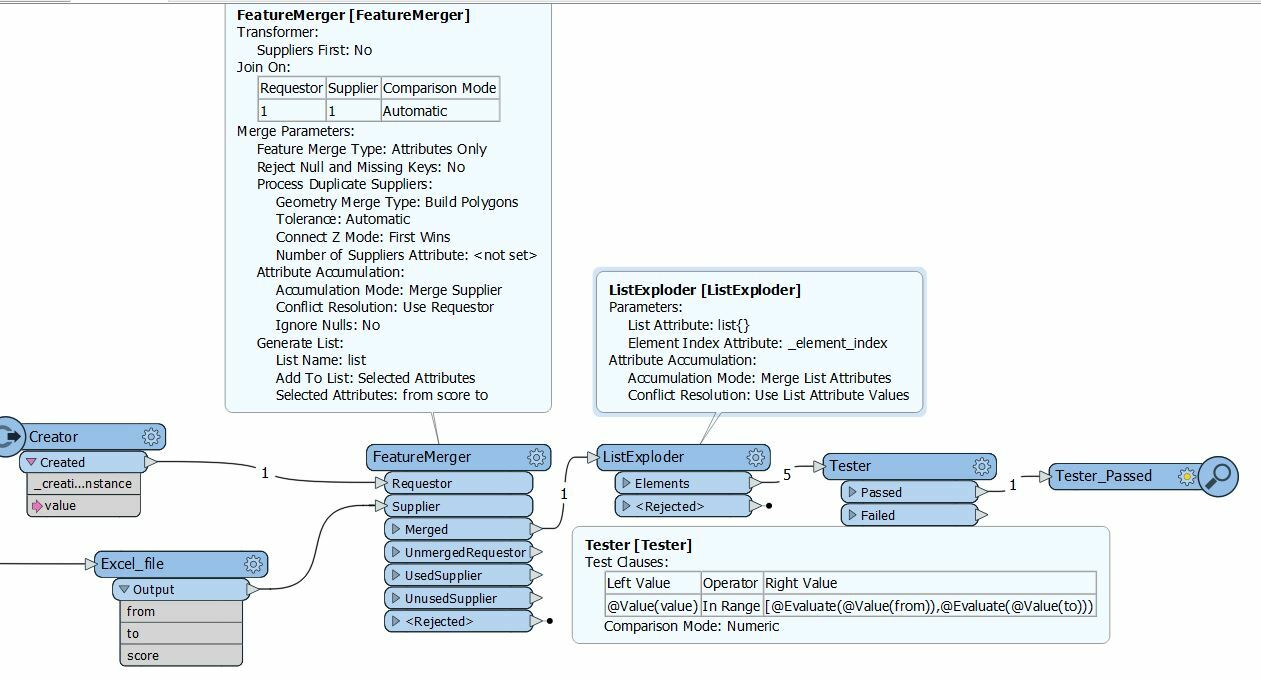Hi all,
I have in an excel sheet something like:

I would like to determine the score according to my attribute value. So for example I hav an attribute with value 10 the score would be 1,5.
The AttribueValueMapper could do this I know, but I would like to point to the excel so I can 'manipulate' the scores in excel and not in FME workbench.
Is there a way to achieve this?
Greetings,
Arno
















